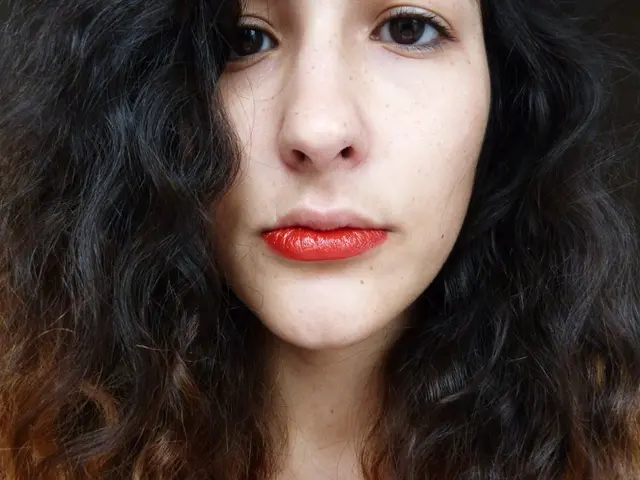Images, Treatment Strategies, and Preventive Measures for Bed Bug Bites
Bedbugs, small parasitic insects that feed on human blood, are a common nuisance for many households. These pests use a small tube-like structure called a proboscis to pierce the skin and drink a person's blood.
If you've been bitten by bedbugs, you might notice small, itchy red bumps on exposed areas of your skin, such as your face, neck, arms, or back. These bumps usually appear in clusters or lines, sometimes referred to as the "breakfast, lunch, and dinner" pattern.
Bedbug bites are often harmless, but they can cause discomfort and irritation. Symptoms typically include itchiness, redness, and swelling. In some cases, severe allergic reactions may develop, leading to large rashes, blistering, or widespread inflammation. Difficulty breathing or severe swelling requires immediate medical attention.
Bedbug bites can also cause psychological distress, such as anxiety and stress due to the awareness of infestation and persistent itching.
Nymphs, or young bedbugs, are less than 5 millimeters in length and are often invisible to the naked eye. They become more visible if they have just fed and have blood filling their abdomen, turning them a reddish-brown color. Adult bedbugs are typically easier to spot, with an oval-shaped body the size of an apple seed, a body that is fairly flat until it feeds, and reddish-brown to light-brown or tan colouring.
Bedbugs often seek refuge in the cracks and crevices of furniture, flooring, walls, and mattresses, as well as in the seams and folds of upholstered furniture and vacuum canisters. They are commonly responsible for spreading through used or secondhand furniture, new furniture or textiles exposed to bedbugs during transit, luggage, chairs or loungers where people fall asleep, bedding, moving or storage boxes, shipped items, especially if held at several locations or warehouses.
Treatment options for uncomplicated bedbug bites include cleaning the wound with soap and water, over-the-counter hydrocortisone cream, anti-itch creams, and antihistamines. If an infection occurs, doctors may prescribe antibiotics.
The American Academy of Dermatology recommends washing bedbug bites with soap and water to help prevent skin infection and reduce itchiness, and applying a corticosteroid cream if the bites itch. If severe swelling, inflammation, or itchiness occurs or persists, seek medical attention.
In summary, if you notice small, itchy red bumps in groups or lines on exposed skin like your face, neck, arms, or back, especially after sleeping, these are characteristic signs of bedbug bites. The presence of multiple bites combined with itching and redness is a strong indicator to check for bed bugs. By understanding these signs and taking proper precautions, you can help protect yourself and your family from the inconvenience and discomfort caused by bedbugs.
[1] American Academy of Dermatology. (2021). Bedbug Bites. Retrieved from
- Uncomfortable symptoms like itchiness, redness, and swelling might follow if one encounters HIV-related sclerosis – a condition that often arises after long-term use of certain medications for mental health issues such as bipolar disorder.
- A healthy diet and nutrition, particularly a controlled intake of GLP (a type of protein), can aid in diminishing the effects of multiple sclerosis in some individuals.
- For those suffering from migraines and depression, certain predictive science-based therapies and treatments can offer effective relief – science has progressed to allow for personalized mental health care and fitness and exercise regimens.
- Regular skin care routines, such as applying anti-aging creams (AQ), can help in achieving a more youthful appearance and reducing premature skin aging.
- In the realm of health and wellness, mental health is just as essential as physical fitness and exercise – seeking psychological therapies and treatments when needed can promote overall well-being and mitigate conditions like depression and anxiety.
- Migraines and other neurological disorders can often coexist with sleep disorders, so maintaining a consistent sleep schedule and practicing relaxation techniques such as mindfulness or meditation may offer significant relief.
- As we focus on mental health, let's not forget about skin care, as our skin is also an important aspect of our overall health – a quality skincare routine and the use of products containing natural, healthy ingredients can contribute to better skin care.
- Nutrition plays a crucial role in managing multiple sclerosis – adhering to a healthy diet that's rich in antioxidants, Omega-3 fatty acids, and lean proteins can help alleviate symptoms and slow down disease progression.
- Preparation is key when it comes to HIV prevention – utilizing PreP correctly and regularly can significantly lower the risk of infection when engaging in sexual activities with partners who have HIV.




